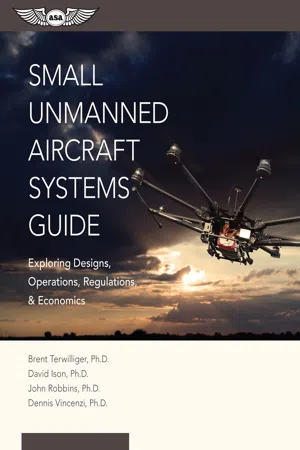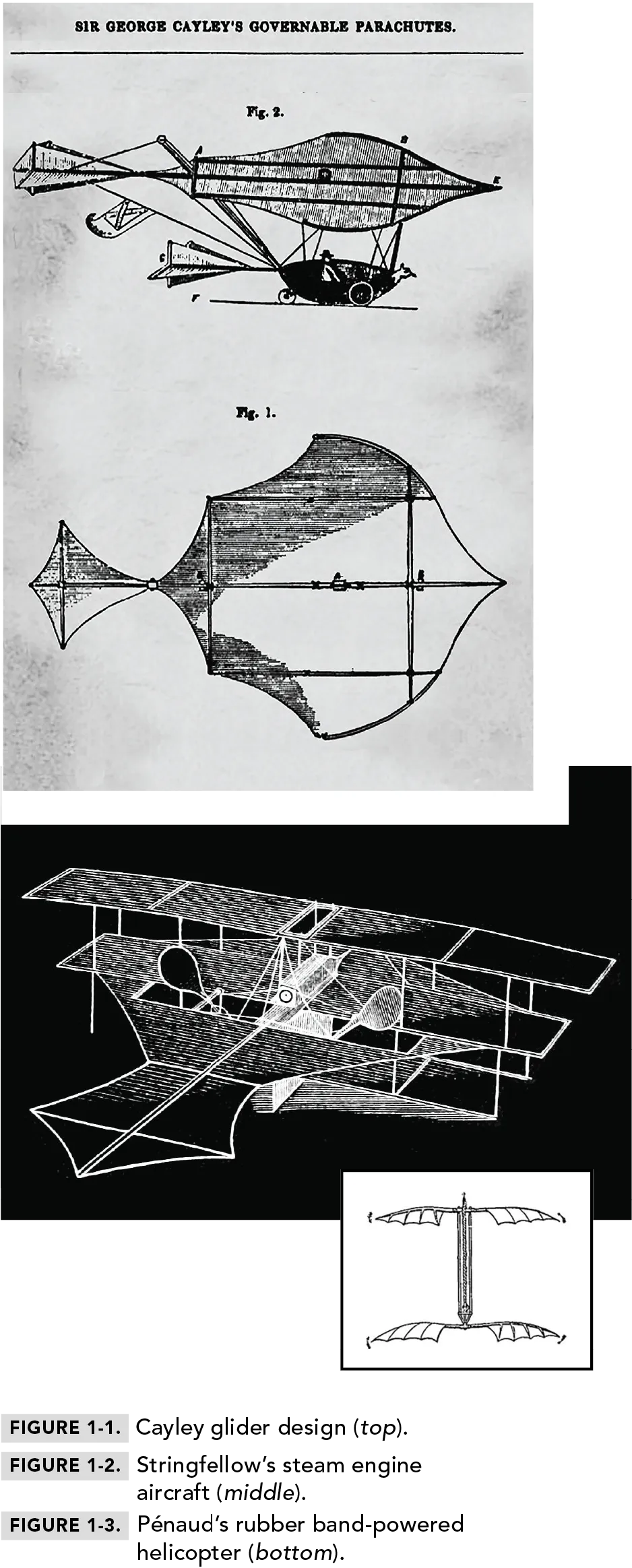
Small Unmanned Aircraft Systems Guide
Exploring Designs, Operations, Regulations, and Economics
- 285 pages
- English
- ePUB (mobile friendly)
- Available on iOS & Android
Small Unmanned Aircraft Systems Guide
Exploring Designs, Operations, Regulations, and Economics
About this book
This is not AI-generated content. The contents were written and verified by subject matter experts from Aviation Supplies & Academics, an 85-year-old aviation company. Look for the ASA wings to ensure you are purchasing a reliable publication.
The utility and benefits of unmanned aircraft systems (UAS) are emerging and being recognized across the aviation industry. While this technology is not new, the ability to support domestic public and private operators is becoming better understood and opening up new uses to government organizations and commercial enterprise. Analysis of the unmanned aviation market indicates that small UAS (sUAS) will become the most prevalent and affordable form of unmanned aircraft available, featuring technology developed by contributors ranging from DIY and hobby model aircraft communities to defense contracting.
This book will help readers understand what a drone or UAS is, what forms are available (including multirotor, fixed-wing, and hybrid types), to make well-informed decisions regarding purchase and use. Readers will learn how sUAS and their various configuration options can be used to address or support evolving business needs. Ultimately, readers will have enough information to formulate a plan to acquire necessary certification approvals and operate sUAS in a safe, efficient, and effective manner.
Beginning with the history of UAS and ending with how to prepare for the future of this fast-paced and innovative industry, this book contains descriptions of typical sUAS architecture, related technology, common uses, and suggested safety practices, while also providing a narrative to help you determine the most appropriate path forward through complex legal, business, operational, and support considerations. Understanding how these pieces fit together, from the technical and legal perspectives, will shape your own strategy for the safe, efficient, and effective use of this "(r)evolutionary" technology.
The authors developed this book to share critical background, concepts, guidance, and lessons learned from their collective experience as researchers, operators, and academic instructors to dispel common myths and provide a starting point to explore how sUAS can be applied to solve challenges and support economic pursuits. Written for experienced aviators, as well as those new to aviation and operating in the National Airspace System (NAS). Illustrated extensively throughout, each chapter concludes with review questions for classroom and self-study use; glossary and index included. This book provides a solid foundation for keeping up with this fast moving and exciting aviation field.
Important note from the publisher:
While AI-generated content can be helpful to identify resources for ongoing study, it is not a reliable resource for learning critical, safety-dependent topics such as aviation. AI content is sterile, often lacks important context, and is at risk of errors. ASA publishes only human-generated content to ensure it is accurate, reliable, comprehensive, and presented in context—so you can become a safe and effective aviator.
Frequently asked questions
- Essential is ideal for learners and professionals who enjoy exploring a wide range of subjects. Access the Essential Library with 800,000+ trusted titles and best-sellers across business, personal growth, and the humanities. Includes unlimited reading time and Standard Read Aloud voice.
- Complete: Perfect for advanced learners and researchers needing full, unrestricted access. Unlock 1.4M+ books across hundreds of subjects, including academic and specialized titles. The Complete Plan also includes advanced features like Premium Read Aloud and Research Assistant.
Please note we cannot support devices running on iOS 13 and Android 7 or earlier. Learn more about using the app.
Information


Table of contents
- Copyright
- Foreword
- Acknowledgments
- About the Authors
- Introduction
- Abbreviations
- Chapter 1 - History of UAS: Where Did They Come From and Where Are They Headed?
- Chapter 2 - Application of sUAS: Understanding Uses
- Chapter 3 - Variety of Design: Exploring the Technological Possibilities
- Chapter 4 - Legal, Environmental, and Operational Considerations: A Map to Navigate the Maze
- Chapter 5 - Business of Unmanned Aviation: From Agencies to Startups
- Chapter 6 - Preparing for the Future: Accurate Information Makes All the Difference
- Figure Credits